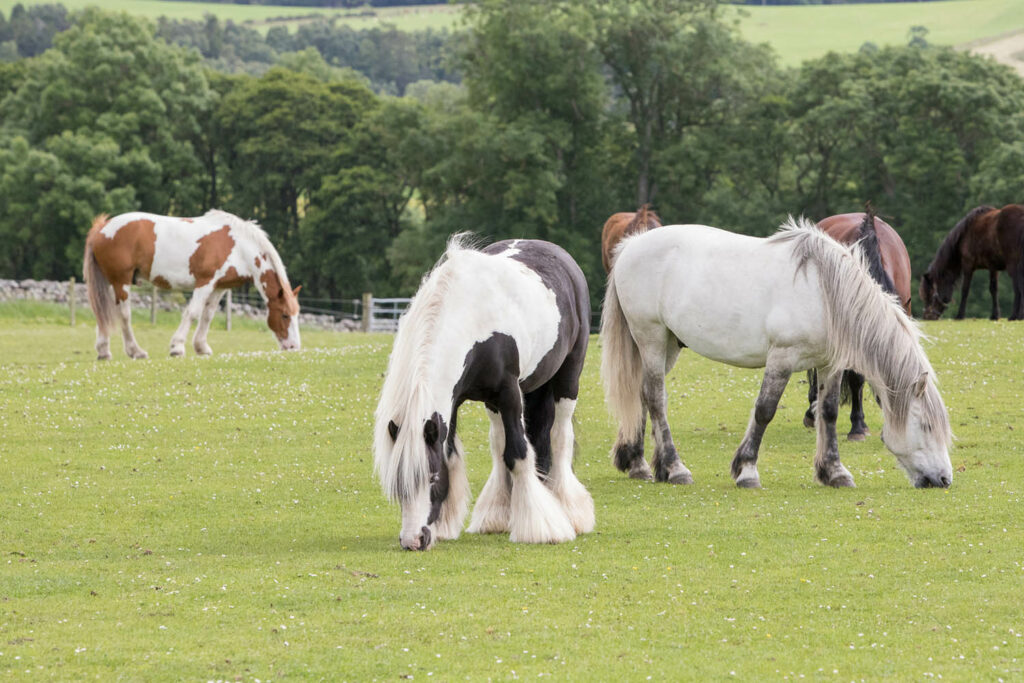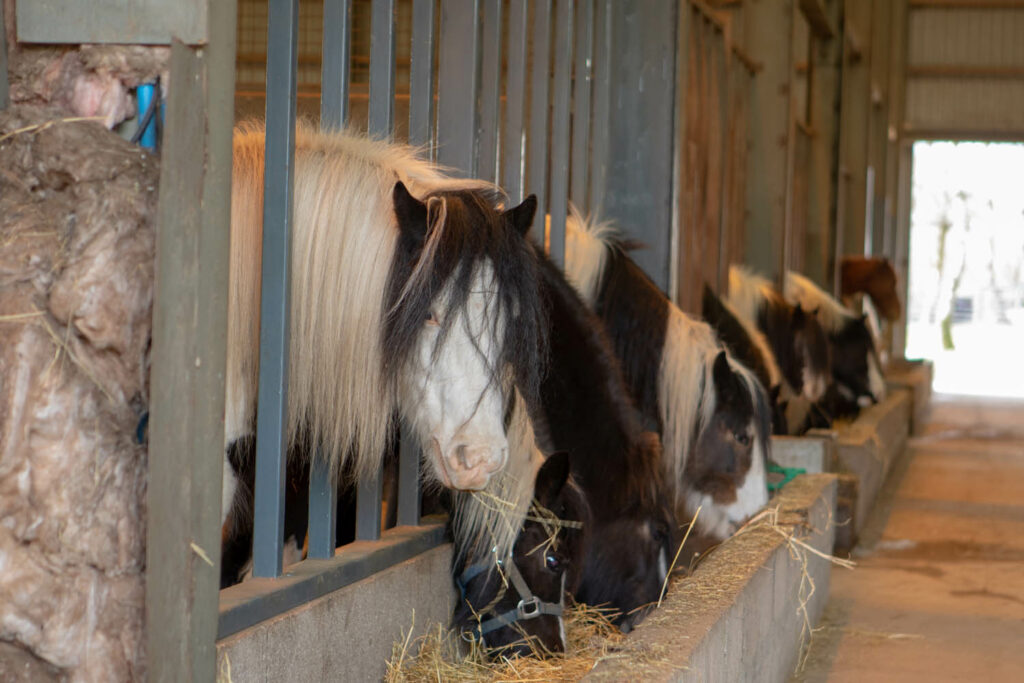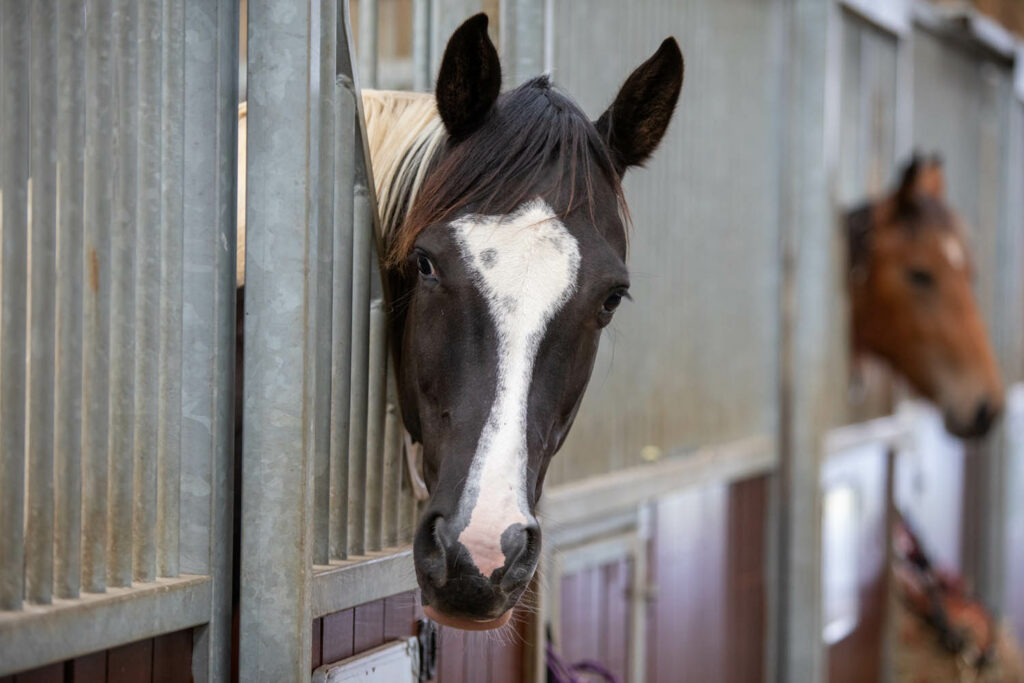Our top 10 management essential considerations:
1. 3Fs
All horses should have access to friends, forage and freedom. In this context, ‘freedom’ means both freedom of movement and freedom of choice. For more information see our 3Fs advice page.

2. Environment and housing options
Horses’ environment and housing should provide them with opportunities to display natural behaviours, including those identified in the 3Fs. When stabled, horses can be provided with forage in different forms and ways to stimulate foraging behaviours, and they can have visual contact (and ideally physical contact) with other horses through bars and windows, using low walls or group housing. Horses should be provided with freedom of movement through turnout and exercise. There are a variety of housing options available including loose boxes, barns, field shelters and living out (paddocks or track) and it is important that, whatever housing option you choose, it meets the species-specific and individual needs of your horse.

3. Livery options
If you keep your horse on a livery yard, there are a range of packages that might be available. These range from grass livery and DIY (do-it-yourself) livery, where you do all day-to-day management, to full livery, where your horse is cared for by the livery yard staff. It is important to research what package will work best for you and your horse’s physical and behavioural needs, as well as what packages available at livery yards around you offer the best value for money.

4. Bedding options
It is important that, if your horse is stabled, they are on suitable bedding to allow them to lie down and sleep comfortably. Options include straw, shavings, paper/cardboard, hemp and wood pellets. Each option comes with its own advantages and disadvantages, so it is important to research the options available and ensure you use a bedding that meets your horse’s needs. For example, if you have a horse with a dust allergy or that is prone to mites, straw may not be suitable whereas dust-extracted shavings or paper could work well.
5. Individual needs
When managing any aspect of your horse’s health and well-being, it is important that their species-specific and individual needs underpin all that you do. All horses share basic biological and behavioural needs, but beyond these they all have distinct personalities and preferences, so it is important that you get to know your horse. It is important that you can recognise when your horse is relaxed or stressed and ensure you adapt your management to meet their needs.
6. Stable enrichment
When horses are stabled, there is a variety of enrichment methods you can use to mimic natural foraging behaviours. This can include using a range of forage feeding methods such as leaving the hay loose, or placing hay nets, hay boxes, slow feeders and hay balls in different positions around the stable. Treat balls can be used as an alternative to feeding concentrates out of a feed bowl and this mimics trickle feeding, but it is important to make sure the stable is clean to prevent contamination of any food. Enriching your horse’s stable environment can also include the use of stable safe mirrors and allowing contact with other horses through lower stable walls or bars wide enough for them to make contact through.
7. Choice
Whether stabled or living out, horses should be offered choice in their environment. We have discussed how to incorporate choice through different methods of presenting forage above. Similar methods can be used when turned out. Choice can also be provided by different surfaces such as bark chip and sand areas to roll in when turned out, hard standing areas to avoid mud and feed forage on (which also helps avoid wastage from forage getting walked into the mud) and providing access to field shelters in a range of locations. You can even take your horse for walks in hand and let them pick the route. The possibilities for including choice in your horse’s daily management are endless, so it’s time to get creative!
8. Pasture management
All yards should have a pasture management plan. This will guide what should be done throughout the year to ensure the pastures are well maintained and meet the needs of the horses. The plan can cover paddock rotation, fencing maintenance, harrowing, rolling and aerating, overseeding or re-seeding, poisonous plant management, de-worming protocols and poo picking schedules.
9. Behaviour
Our management of horses should meet their species-specific behavioural needs and promote mental well-being, enabling them to display natural behaviours through minimising restrictive practices. For more information, see the webinar ‘Promoting Positive Behaviour and Wellbeing through Management’.
10. Health
If we can manage horses in a way that promotes their species-specific behavioural needs, this will help them to be both physically and mentally healthy. It is important that you can recognise common signs of good and ill health, as early intervention when horses are ill or injured is key. However, our management should aim to prevent health issues before they arise, through good hygiene, vaccinations, regular health checks and by having an annual health plan.
Popular advice in Well-being essentials

The 3Fs – Friends, forage and freedom
Find out how you can meet your horse’s fundamental needs using the 3Fs

The 5 Domains of animal welfare
Find out how you can meet the species specific needs of your horse using the 5 Domains of animal welfare
Other advice categories
All webinar categories:
Call our Advice Line
+44 (0)1953 497 238Not found the advice or answer you were looking for here? Then our Advice Line is available during office hours, or you can email us on education@worldhorsewelfare.org to let us know what topics you were looking for.


